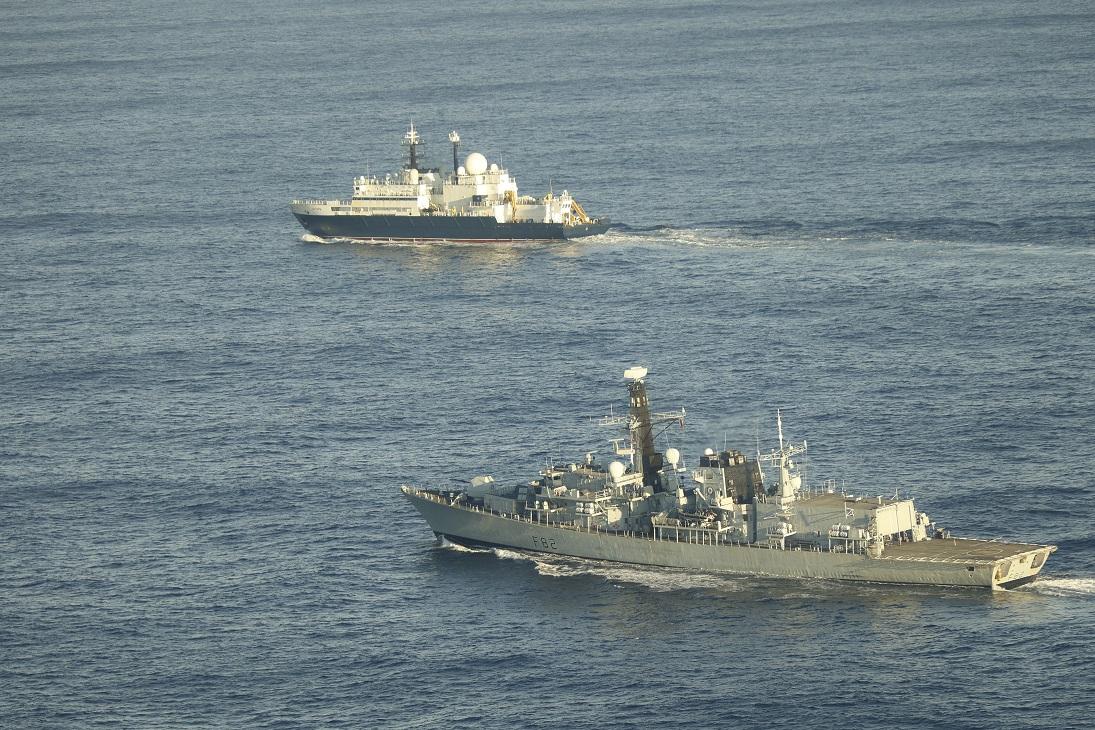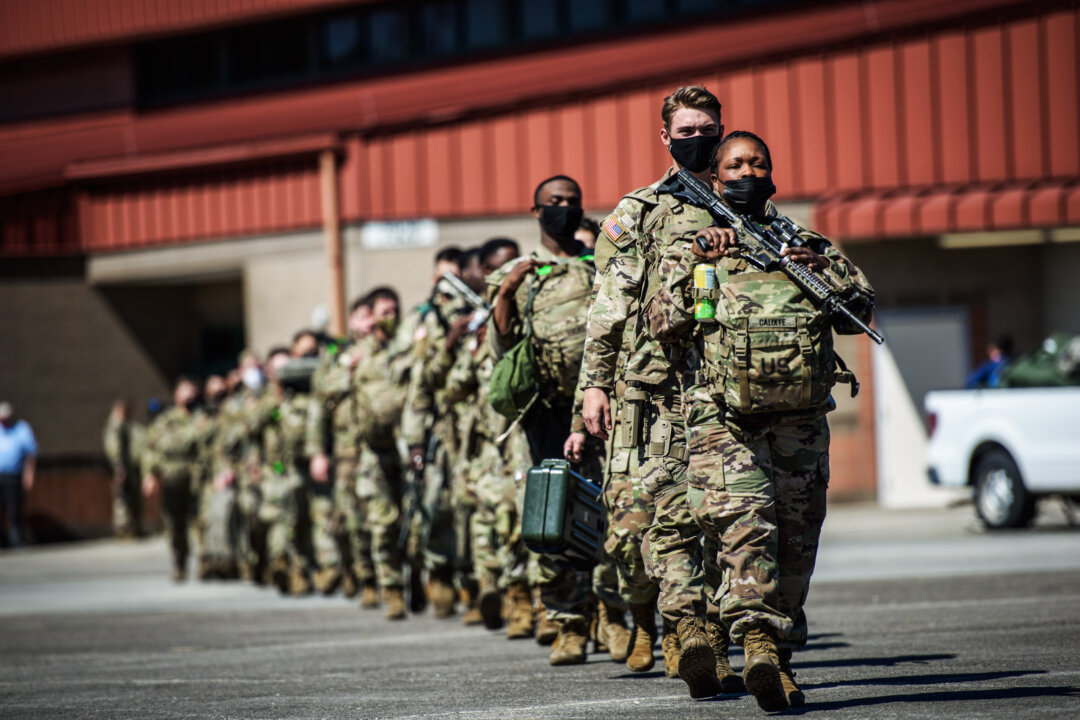Trump says he wants NATO countries to spend 5 percent of GDP on defense, which analysts say is ‘unrealistic’ for many European nations.
News Analysis
Mark Rutte, secretary general of the North Atlantic Treaty Organization (NATO), said this week that U.S. President Donald Trump is right to request members of the alliance spend at least 5 percent of their gross domestic product (GDP) on defense.
“If Ukraine loses, then to restore the deterrence of the rest of NATO again, it will be a much, much higher price than what we are contemplating at this moment in terms of ramping up our spending and ramping up our industrial production,” Rutte said at a side event at the World Economic Forum in Davos on Jan. 23.
“It will not be billions extra, it will be trillions extra,” he said.
Earlier on Jan. 23, Trump addressed World Economic Forum attendees by video link.
“I’m also going to ask all NATO nations to increase defense spending to 5 percent of GDP, which is what it should have been years ago—it was only at 2 percent, and most nations didn’t pay until I came along, I insisted that they pay, and they did,” he said.
In 2014, NATO set a target for all members to spend at least 2 percent of their GDP on their militaries by 2024. However, Russia’s invasion of Ukraine in February 2022 increased spending pressure on the alliance.
According to provisional NATO estimates for 2024, published in June 2024, 23 of the 31 NATO members had hit the 2 percent target.
But analysts say meeting a 5 percent target could cause huge political problems for many European nations, especially those who do not see Russia as an “existential threat.”
Tim Ripley, a defense analyst and author of “Little Green Men: The Inside Story of Russia’s New Military Power,” told The Epoch Times that big increases in defense spending will be very unpopular in most European countries because it can only be funded by tax increases, cuts in services, or more borrowing.
“If you borrow the money, that will quadruple everybody’s interest rates. So everyone will pay for it that way, or you put taxes up to pay for it as well. So it’s a massively unpopular thing to do that across Europe,” he added.
NATO says U.S. defense expenditure makes up approximately two-thirds of the alliance’s overall spending.
Ripley noted that if the United States were to increase its defense spending from its current 3.5 percent to 5 percent, it would involve “astronomical sums” of money.
Albert Swidzinski, director of analyses at Warsaw-based think tank Strategy & Future, said the 5 percent target is “seriously unrealistic, in my opinion—if you look at the economic situation and the political instability in European states.”
France, Britain, and Germany all face “serious economic problems” and the latter is in the midst of an election campaign, he told The Epoch Times.
German Chancellor Olaf Scholz, at a Jan. 13 election event in Bielefeld, Germany said, “Five percent would be over 200 billion euros [$209 billion] per year, the federal budget is not even 500 billion euros ($523 billion).”
“That would only be possible with massive tax increases or massive cuts to many things that are important to us,” he said, as reported by the DPA news agency.

Tension Over Ukraine in NATO
NATO was founded in 1949 and has 32 members, including Finland and Sweden, who joined in 2023 and 2024 respectively.
As of November 2024, NATO members have contributed nearly $860 billion to a fund that provides military assistance and support to Ukraine.
Rutte, a former prime minister of the Netherlands, also suggested Ukraine would be welcome in the alliance and said Russian President Vladimir Putin should not have veto power over which country joins NATO.
Richard Grenell, the new U.S. envoy for special missions, responded to Rutte’s remarks by saying, “You’re going to run into a big buzzsaw in America if we have the NATO secretary general talking about adding Ukraine to NATO.”
“The American people are the ones who are paying for the defense. You cannot ask the American people to expand the umbrella of NATO when the current members aren’t paying their fair share, and that includes the Dutch.”
Rutte responded to Grenell’s comments by saying, “He’s quite right. The problem is not the U.S., the problem is Europe. The problem is that, and Trump has consistently made this point, that in Europe we are under-spending in terms of defense.”
“Thanks partly to him we have seen this upturn in spending in NATO on the European side,” he added.
Rutte said Trump “felt that basically the U.S. was getting a bad deal and Europe was basically funding its social model and its health care system, and its pension system, and under-spending in defense.”
The secretary general said 2 percent was “not nearly enough,” adding that at the NATO summit in June a new target of at least 3 percent, will likely be set.
Ripley said the request for 5 percent of GDP is a very “Trumpian” move, but other NATO members could just run out the clock on Trump’s administration, which is term-limited.
‘Existential Threat’ in the East
Guntram Wolff, a senior fellow at the Bruegel think tank in Brussels, recently told The Associated Press, “If you’re a Baltic country, you’re much more exposed to immediate threats than, let’s say, if you’re Portugal. So there’s a distributional issue here about who will invest how much. And the Baltics certainly may want to invest more.”
Swidzinski agrees.
“The basic reality is that those states that are directly, existentially threatened by Russia and Russia’s attempt to recreate the sphere of influence it had, will spend the money necessary. They will be willing to sacrifice other programs in order to enhance their security situation.
“But those countries west of Poland—that’s Germany, France, the UK, Spain, you name it—those states are not existentially threatened by Russia,” he said.
“So those countries who are less exposed to the risk emanating from Russia will be unwilling, I believe, to up their defense spending so significantly.”
On Jan. 13, France’s Defense Minister Sebastien Lecornu said the French military budget will increase but did not specify a percentage of GDP.
France has struggled to balance its budget recently, and its public debt is projected to soar to above 3 trillion euros ($3.17 trillion) by 2025, which is around 110 percent of GDP.
“The situation is worse than it was during the Cold War,“ Lecornu said, referring to cyber attacks. “We can be defeated without being invaded.”
Polish Prime Minister Donald Tusk told members of the European Parliament on Jan. 22 that “We shouldn’t be irritated” about Trump’s 5-percent-of-GDP request.
“Some think it’s extravagant, or it is a brutal or malicious warning,” Tusk said. “I would like to tell you that this is a time when Europe cannot afford to save on security.”
EU foreign policy chief Kaja Kallas, speaking at the European Defence Agency’s conference on Jan. 22, said that “Russia poses an existential threat to our security today, tomorrow, and for as long as we underinvest in our defense.”
On Jan. 17, Lithuanian President Gitanas Nauseda said that Lithuania will raise its defense spending to between 5 percent and 6 percent, starting in 2026.
“Our security is also assured by our membership in the NATO alliance,“ Nauseda said, ”but it will only be effective if we are prepared to defend ourselves.”
Lithuania, which was part of the Soviet Union until it became independent in 1990 following the bloc’s collapse, currently spends just over 3 percent of GDP.
Alexander Lanoszka, an associate fellow at the Council on Geostrategy, wrote in the Britain’s World substack that Trump “has good reason to demand greater European defense spending.”
“European countries are experiencing economic headwinds and growing government dysfunction,” she wrote. “They might face a real limit in going about the investments that the Trump administration wishes to see from them.”

Factories at ‘Full Tilt’
Ripley pointed out most defense factories in Europe and North America are already operating at “full tilt” and it is difficult to know how extra money will be spent, especially as countries such as Britain are failing to recruit enough people for their armies at present due to what he called a “demographic time bomb.”
At the World Economic Forum this week, Rutte said China and Russia are both out-producing NATO countries, including the United States, on industrial production of arms and weaponry.
“The whole of NATO, from California up to and including Ankara, produces, in terms of ammunition, is producing in a full year what Russia is producing in three months.”
“We are really in crisis mode now,” Rutte said.
Next week up to 10,000 NATO troops from Britain, France, Spain, Slovenia, and Turkey will take part in an exercise, called Steadfast Dart 25, in Romania, Bulgaria, and Greece.
The first British troops arrived in Romania for the exercise on Jan. 22.
“The exercise will demonstrate NATO’s ability to activate the Allied Response Force (ARF) and coordinate its rapid transition,” the UK’s Ministry of Defence said.
The exercise has been timed to coincide with the third anniversary of the Russian invasion of Ukraine, but it remains to be seen whether improving NATO’s performance and flexibility will make a dent in Moscow’s aggressive stance in eastern Europe.

